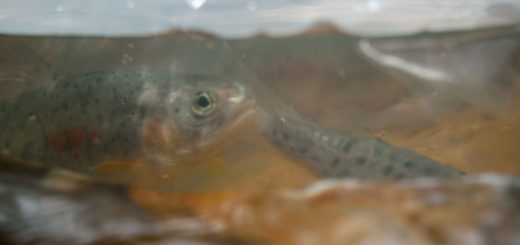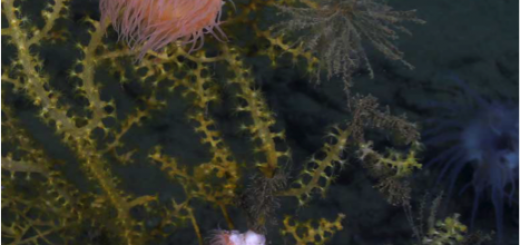eDNA: An exciting new tool for fisheries research
Studying aquatic organisms is challenging. Unlike counting sheep in a pasture, counting fish in the water is much more difficult. The most effective method varies considerably among species. Fisheries scientists have traditionally used nets, traps, electrofishing or visual observations to sample fish in the field, but these surveys can be time consuming and expensive.
Environmental DNA (eDNA) is an exciting new technology that can be used to detect the presence of fish species by collecting a water sample and analyzing it for traces of DNA. eDNA is based on the principle that fish (and other animals) slough DNA into the water through shed scales, skin cells, feces, and other tissues. After a water sample is collected and filtered, the DNA can be extracted and analyzed in a laboratory. The two most commonly used methods for detecting DNA in water samples are quantitative polymerase chain reaction (qPCR) and metabarcoding.
Using qPCR, individual species can be detected from the millions of DNA particles in a water sample. This technique is cost-effective, and scientists can get the results back in several days. Dr. Louis Plough from the University of Maryland’s Horn Point Laboratory led a study that compared eDNA sampling to traditional methods for surveying river herring to determine the efficacy of this novel technique. River herring (Figure 1), collectively alewives (Alosa pseudoharengus) and blueback herring (Alosa aestivalis), are small, anadromous fish native to the Atlantic Ocean off the East Coast of North America. Each spring, river herring migrate into freshwater rivers to spawn. In rivers where they both spawn, alewives typically begin migrating upstream first, followed by blueback herring about three to four weeks later. Shortly after spawning, the spent adults begin to make their way back downstream.
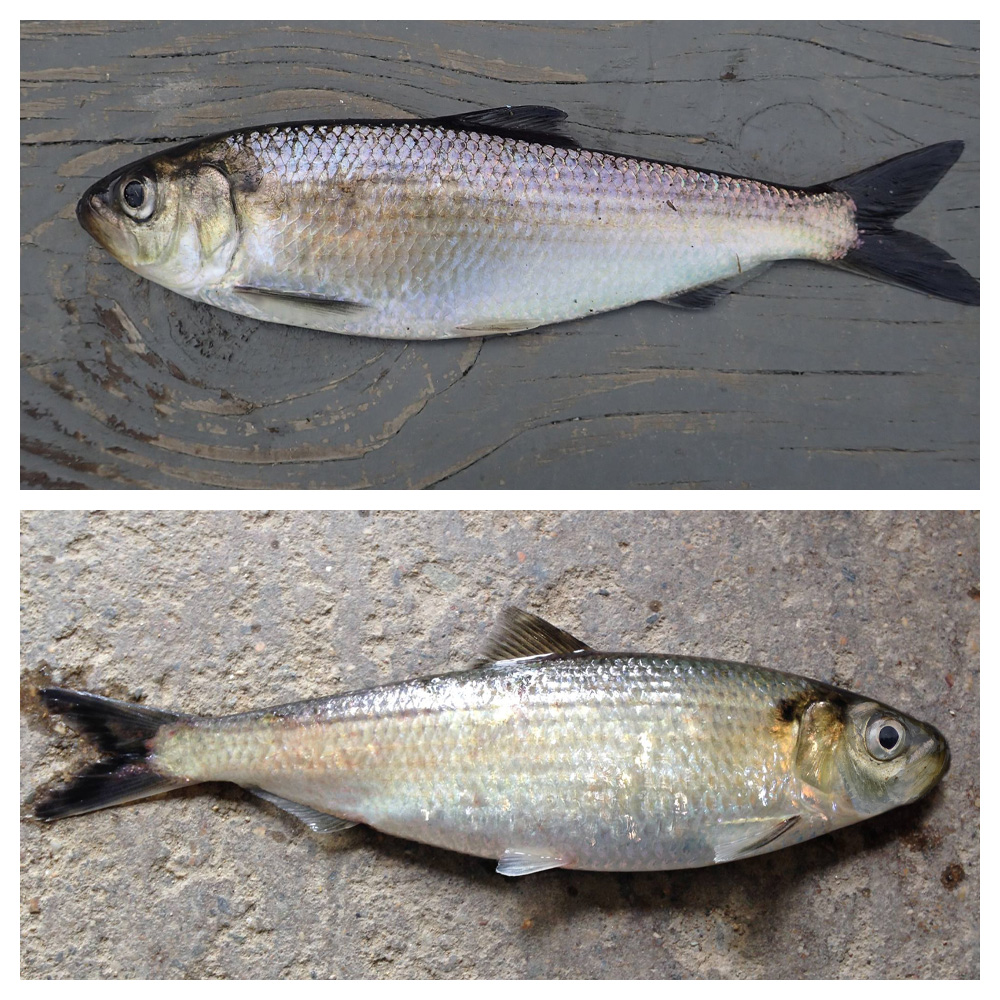
During the spawning runs in 2015 and 2016, the researchers collected eDNA samples from 196 study sites throughout 12 tributaries of the Chesapeake Bay. In the lab, a qPCR assay was developed to target and identify the species of river herring migrating upstream. In these same tributaries, traditional methods were employed including visually identifying migrating adults and sampling ichthyoplankton (fish larvae and eggs) using a plankton net.
eDNA corresponded with the traditional methods and determined the species present in each tributary. At the beginning of the spawning run, only alewife eDNA was detected for several weeks before the schools of blueback herring migrated up the rivers, following the known differences in the timing of each species’ migration. eDNA also revealed information on the distribution patterns of the two species. Alewife detections were more common in the rivers along the eastern shore of the Chesapeake Bay while blueback herring were more commonly detected along the western shore.
eDNA can also be used to monitor entire fish communities by a method called metabarcoding. eDNA metabarcoding detects a wide variety of species so the sequences can be compared to a genetic reference database, such as GenBank, for identification. This method can also detect species that are not commonly captured using traditional techniques. Dr. Yuan Liu from the NOAA Fisheries Milford Laboratory in Connecticut conducted a study to examine the fish assemblages in Long Island Sound by collecting eDNA samples from two habitats: a natural boulder reef and an oyster aquaculture farm. During the summer of 2017, water samples were collected once a month from near the bottom at each site using Niskin bottles (Figure 2).
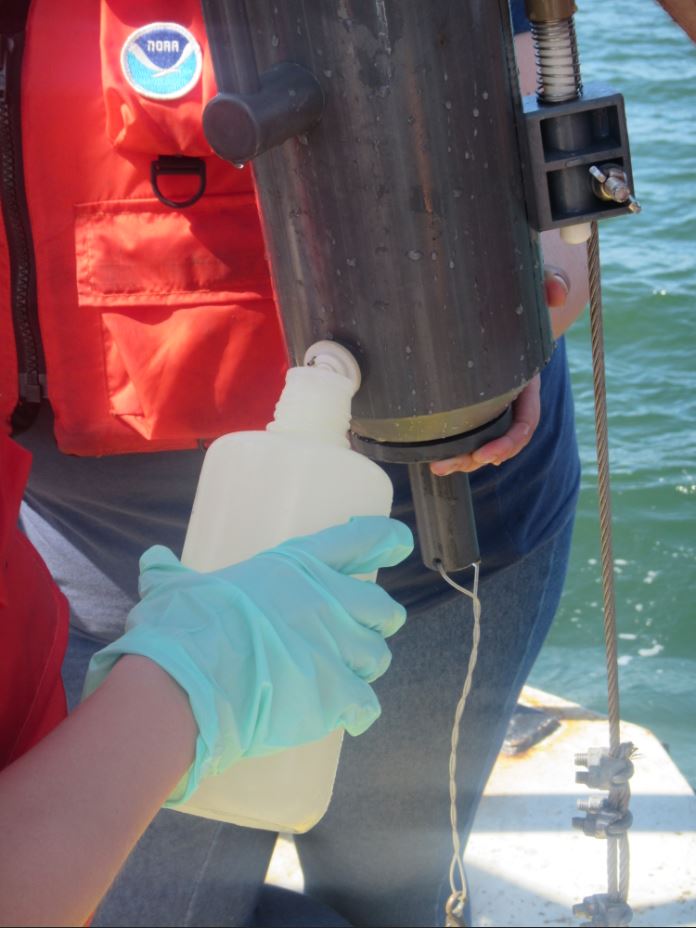
eDNA metabarcoding detected the DNA of 42 fish species including common species such as bay anchovy (Anchoa mitchilli), Atlantic menhaden (Brevoortia tyrannus), and bluefish (Pomatomus saltatrix). One species surprisingly abundant in the July samples was Atlantic thread herring (Opisthonema oglinum; Figure 3). Thread herring are a coastal species typically not found north of Chesapeake Bay. With the exception of one fish that was caught in a trawl survey in 2015, this species had not been detected in any other traditional fisheries survey in Long Island Sound.
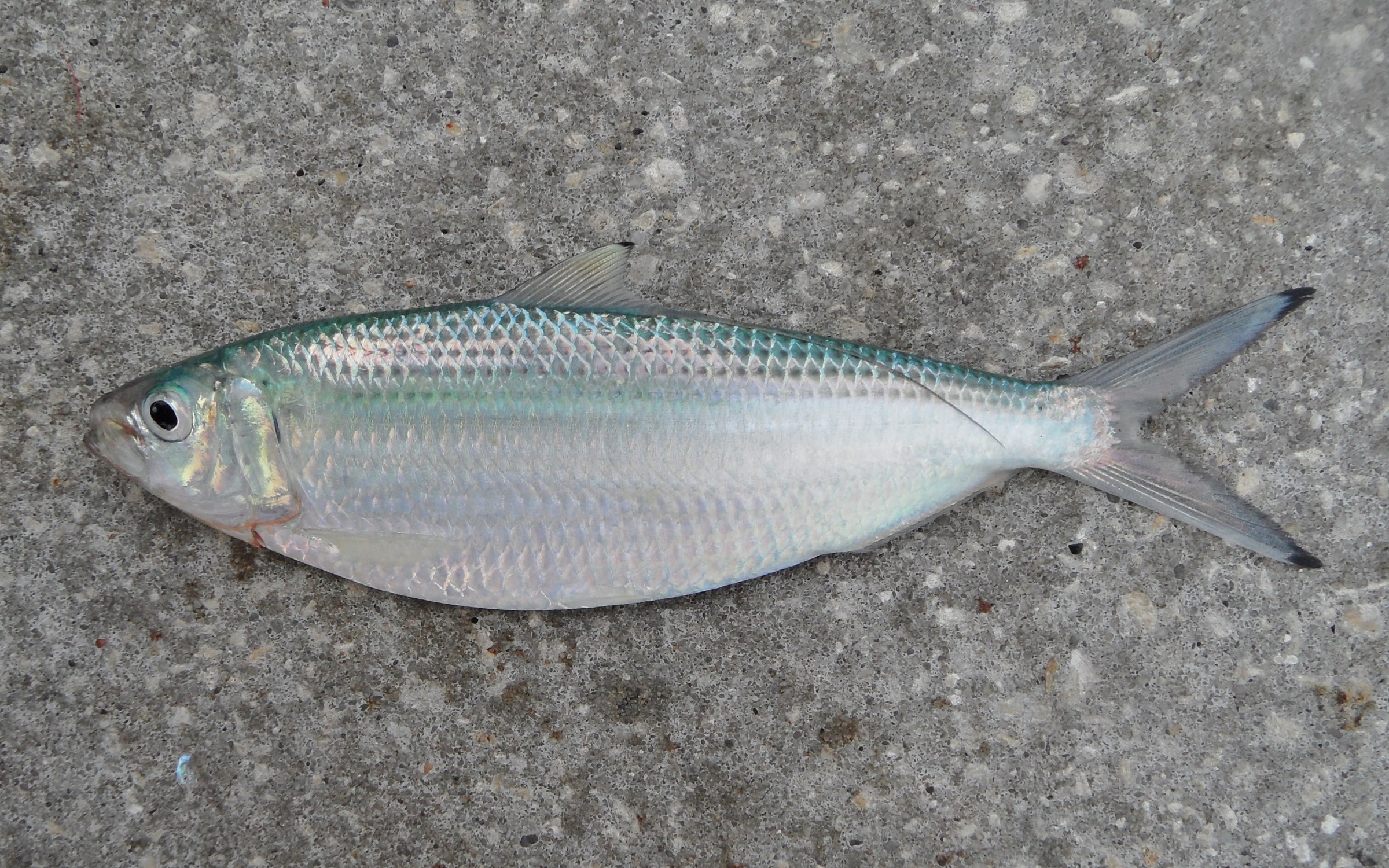
As eDNA is still an emerging technology in fisheries science, one challenge for metabarcoding is that reference databases are still incomplete. Between 2017 and 2019, Dr. Mark Stoeckle from The Rockefeller University in New York City, conducted an eDNA survey to assess the coastal fish community near Barnegat Inlet in New Jersey. Water samples were collected twice a month from along the shoreline at a sampling site in Barnegat Bay and another in the ocean and filtered back at the lab (Figure 4). When compared to the NJ Checklist of Saltwater Fishes, it was found that 31 species on the list considered common in NJ waters did not have sequences in the reference library for Mid-Atlantic coastal fishes. To improve the library, tissue samples were collected from trawl surveys and university reference collections.
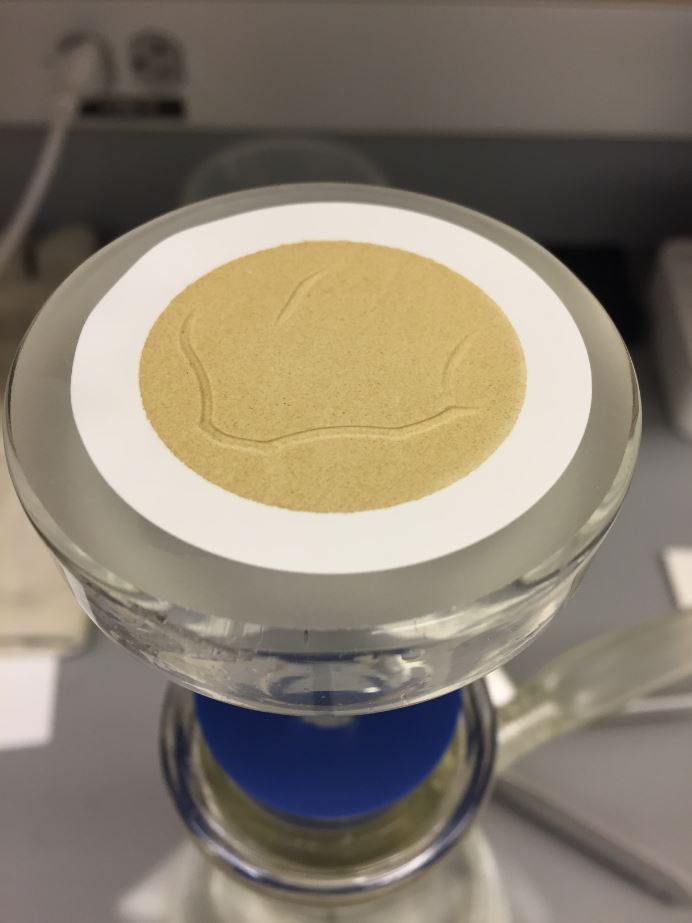
Using eDNA metabarcoding, 74% of the species on the checklist were detected including 95% of the species listed as “common” or “abundant” in New Jersey. Two southern species were also detected regularly throughout the summer months: gulf kingfish (Menticirrhus littoralis; Figure 5) and Brazilian cownose ray (Rhinoptera brasiliensis). Gulf kingfish are native to the Gulf of Mexico, but migrants have only been found as far north as Chesapeake Bay. Brazilian cownose rays were originally only believed to live off the coast of Brazil, but they have been observed in the Gulf of Mexico in recent years. Neither of these species had been captured by traditional fisheries surveys in New Jersey waters, though in 2017, a Brazilian cownose ray was found washed up on the beach in Barnegat Light.
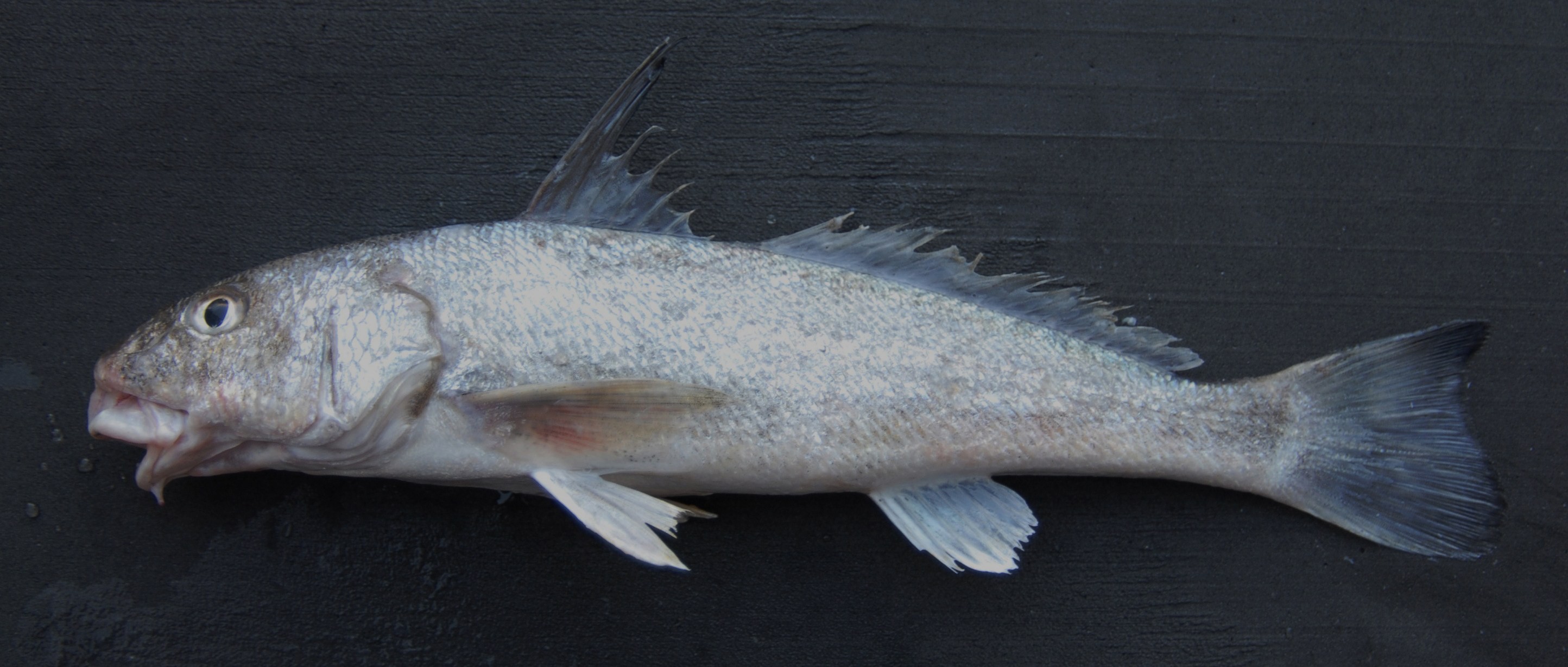
eDNA is becoming increasingly popular with fisheries scientists. It is cost-effective and less invasive to the fish and the environment. Despite some of its current limitations and challenges, eDNA has the potential to become a valuable monitoring tool in fisheries.
References:
Liu, Y., G.H. Wikfors, J.M. Rose, R.S. McBride, L.M. Milke, and R. Mercaldo-Allen. 2019. Application of environmental DNA metabarcoding to spatiotemporal finfish community assessment in a temperate embayment. Frontiers in Marine Science 6: 674.
Plough, L.V., M.B. Ogburn, C.L. Fitzgerald, R. Geranio, G.A. Marafino, and K.D. Richie. 2018. Environmental DNA analysis of river herring in Chesapeake Bay: A powerful tool for monitoring threatened keystone species. PLOS One 13(11): e0205578.
Stoeckle, M.Y., M. Das Mishu, and Z. Charlop-Powers. 2020. Improved environmental DNA reference library detects overlooked marine fishes in New Jersey, United States. Frontiers in Marine Science 7: 226.

